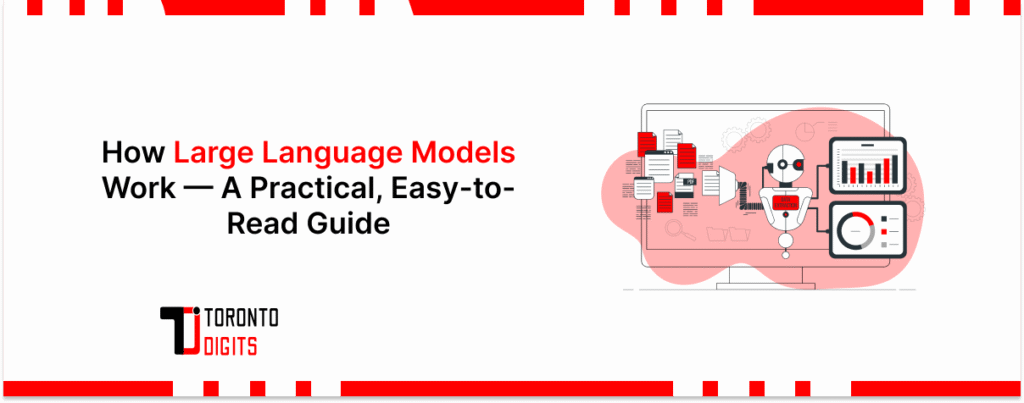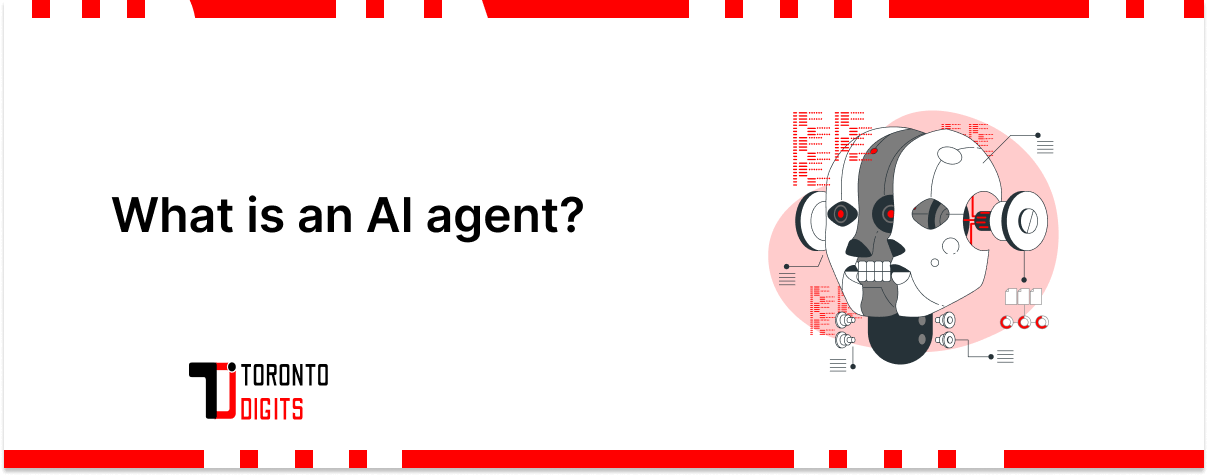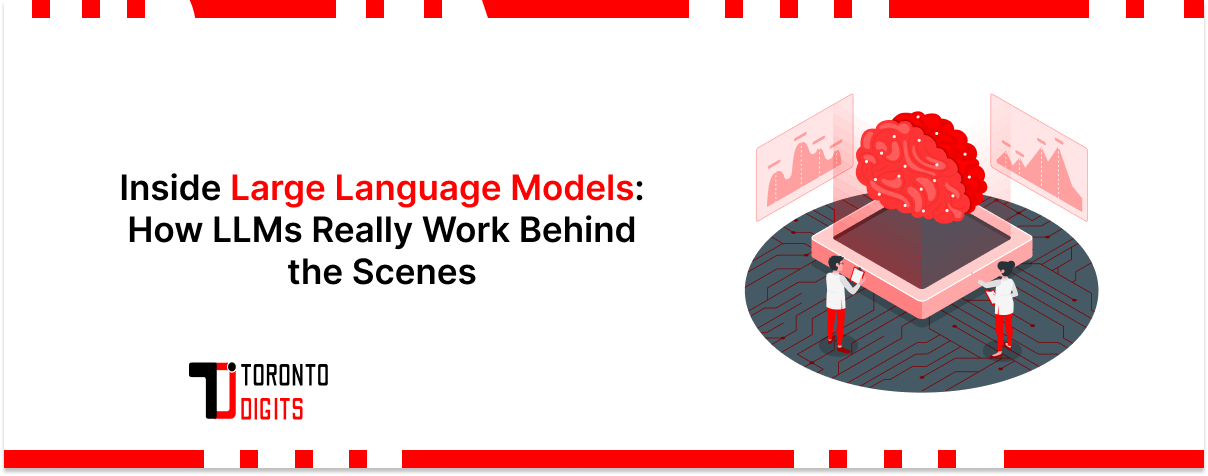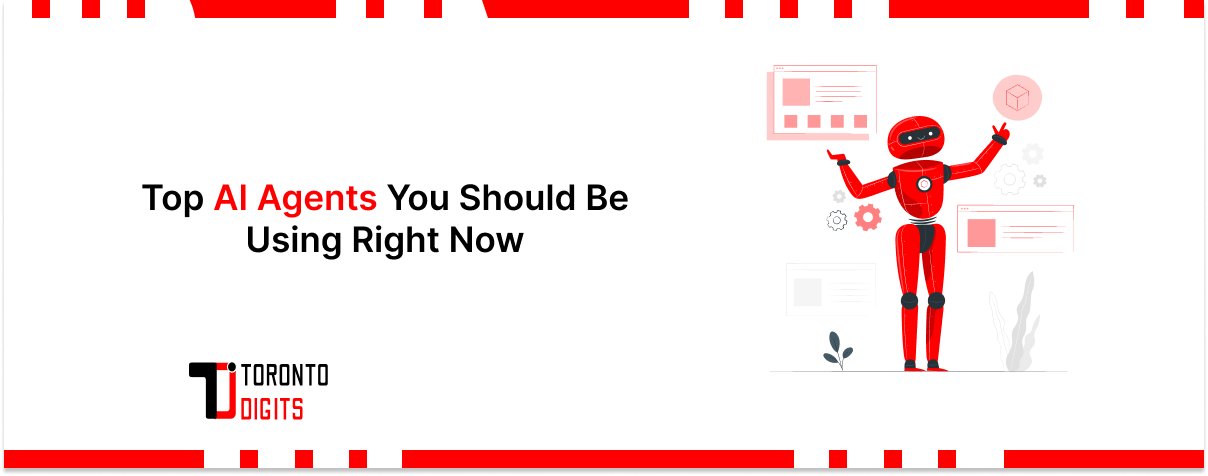Large Language Models — or LLMs — are the engines powering conversational AI, smart search, code generation, personalized tutoring, and much of today’s generative AI.
This article explains, in plain language, what LLMs are, how they’re built and trained, how they generate text, where they’re used, what limits them, and where research is headed. Whether you’re a beginner, a product manager, or a curious technologist, you’ll finish with a clear, practical understanding of LLMs.
Large language models (LLMs) are AI systems trained to understand and generate human language. They’re built with deep learning methods and are central to modern natural language processing (NLP). From customer-support chatbots to creative writing assistants and medical summarizers, LLMs are transforming industries like healthcare, finance, education, and entertainment.
What is an LLM?
An LLM is a neural network model trained on massive collections of text to predict, understand, or generate natural language. The term breaks down to:
- Language Model: a system that models the probability of sequences of words or tokens.
- Large Scale: trained on enormous datasets with billions (or trillions) of parameters.
- Transformer: the modern architecture that made large-scale language modeling practical and effective.
LLMs let machines map patterns between words and contexts so they can perform tasks like translation, summarization, Q&A, and creative generation.
How LLMs Work
A. Architecture of LLMs
Most modern LLMs use the transformer architecture. Key concepts:
- Tokens: text is broken into smaller units (words, subwords) called tokens.
- Embeddings: tokens are converted into dense numeric vectors representing meaning.
- Layers: the model stacks many layers of computation (transformer blocks).
- Self-attention: each token learns to “attend” to other tokens; this lets the model weigh which words in the context matter most.
- Parameters: the numerical weights learned during training — modern LLMs often have millions to hundreds of billions of parameters.
Transformers replaced older recurrent architectures because they scale better and can model long-range dependencies more effectively.
B. Training Process
Training an LLM typically involves:
- Data collection & preprocessing: massive, diverse datasets (books, web pages, articles, code). Preprocessing cleans, tokenizes, and filters data.
- Training paradigms:
- Unsupervised / self-supervised learning: the model predicts masked or next tokens using the text itself as supervision.
- Supervised learning: used when labeled examples exist for a specific task.
- Reinforcement learning (RL): sometimes used post-training (e.g., RL from human feedback) to align outputs with human preferences.
- Unsupervised / self-supervised learning: the model predicts masked or next tokens using the text itself as supervision.
- Compute & cost: training requires heavy compute (GPUs/TPUs) and time; that’s a major practical constraint.
- Challenges: data bias, noisy or toxic content, privacy concerns, and the environmental and economic costs of large-scale training.
C. Inference and Text Generation
Once trained, LLMs perform inference — generating outputs for new inputs. Important ideas:
- Context window: the size (in tokens) the model can “see” at once; larger windows enable more context-aware responses.
- Decoding techniques: methods to turn model probabilities into text:
- Greedy decoding: choose the highest-probability token each step (fast, often repetitive).
- Beam search: keeps multiple candidate sequences to optimize overall coherence.
- Sampling (top-k, top-p/nucleus): introduce randomness to increase diversity and creativity.
- Greedy decoding: choose the highest-probability token each step (fast, often repetitive).
- Temperature: a parameter that controls randomness; higher temperature → more diverse outputs.
D. Fine-Tuning and Transfer Learning
Rather than training from scratch, many workflows fine-tune a pre-trained LLM on task-specific data. Benefits:
- Faster and cheaper than full training.
- Requires less labeled data.
- Can produce specialized models (medical summarizer, legal assistant).
Techniques include full-parameter fine-tuning, parameter-efficient approaches (adapter layers, LoRA), and instruction tuning to align with human instructions.
Examples of LLMs
A. ChatGPT
A conversational LLM optimized for chat and instruction-following. Used widely for customer service, educational tutoring, creative writing, and code help.
B. Other Notable LLMs
- GPT (GPT-2, GPT-3, etc.): autoregressive models that predict the next token.
- BERT: bidirectional encoder focused on understanding tasks (classification, QA).
- T5, RoBERTa: variants optimized for different tasks and pretraining objectives.
- Specialized LLMs: domain-specific models trained or fine-tuned for law, medicine, or particular languages.
Each model family has trade-offs (generation quality, efficiency, and suitability for tasks).
Types of LLMs
- Generative vs. Discriminative:
- Generative models produce new text (e.g., GPT family).
- Discriminative models classify or score inputs (e.g., BERT for sentiment).
- Generative models produce new text (e.g., GPT family).
- Auto-regressive vs. Auto-encoding:
- Auto-regressive models predict tokens sequentially (good for generation).
- Auto-encoding models reconstruct masked inputs (good for understanding).
- Auto-regressive models predict tokens sequentially (good for generation).
Choose model types based on the use case (generation vs. comprehension).
LLMs in Generative AI
LLMs are at the core of generative AI tasks:
- Creative writing & content generation: marketing copy, scripts, song lyrics.
- Code generation: developers use LLMs to scaffold functions, explain code, and automate tasks.
- Design & ideation: brainstorming concepts or generating asset descriptions.
- Impact on industries: they increase speed, reduce costs, and democratize content creation — but also shift job roles and workflows.
Ethical considerations: copyright, misinformation, bias, and the potential for misuse must be addressed with guardrails and human oversight.
Real-Life Applications of LLMs
Examples that show practical value:
- Customer support chatbots: 24/7 assistance, reduced wait times, and automated triage.
- Educational tools: personalized tutoring, automated grading, and content summarization.
- Healthcare: clinical note summarization, literature review assistance (must have careful validation).
- Business intelligence: summarizing reports, drafting emails, and generating insights.
Benefits: efficiency, scalability, and better accessibility.
Challenges: hallucinations (confident but incorrect answers), privacy, data governance, and liability.
Current Limitations and Future Directions
Limitations
- Hallucination: LLMs sometimes produce plausible but false statements.
- Context understanding: difficulties with deep reasoning and multi-step logic (still improving).
- Compute & cost: training/inference can be expensive.
- Bias & safety: models reflect biases in training data and can generate harmful content.
Research directions
- Explainability: making model decisions transparent.
- Reducing bias & improving robustness: better data curation and fairness-aware training.
- Multimodal models: integrating text with images, audio, and video (richer AI assistants).
- Efficiency: smaller models with similar performance, better compression, and parameter-efficient fine-tuning.
- Long-context models: handling documents, books, and long conversations without losing coherence.
FAQ:
What does LLM mean in AI?
LLM stands for Large Language Model — a model trained on large amounts of text to understand and generate human language.
Is ChatGPT an LLM?
Yes. ChatGPT is a type of LLM optimized for conversational and instruction-following tasks.
How do LLMs differ from traditional ML models?
Traditional ML models are often task-specific and small-scale. LLMs are pre-trained on massive datasets and can be adapted to many tasks with little or no labeled data.
What ethical concerns are associated with LLMs?
Misinformation, bias, privacy violations, copyright issues, malicious use (e.g., automated disinformation), and workforce impacts are major concerns.
Conclusion
LLMs are a transformative class of AI models enabling machines to read, summarize, translate, and generate human-language content at scale. They combine powerful transformer architectures, massive training data, and clever decoding strategies to produce useful, sometimes surprising results. While they bring enormous benefits across industries, responsible deployment — including transparency, human oversight, and careful evaluation — is essential.




